Sheikh Abd el-Gurna (Tomb 1152) (Egypt)
In the fourth season of the expedition to the Coptic Hermitage in Sheikh Abd el-Gurna (from mid January to the beginning of March) the team went on to uncover more of the courtyard in front of the mouth of the Middle Kingdom tomb in which it had been arranged.
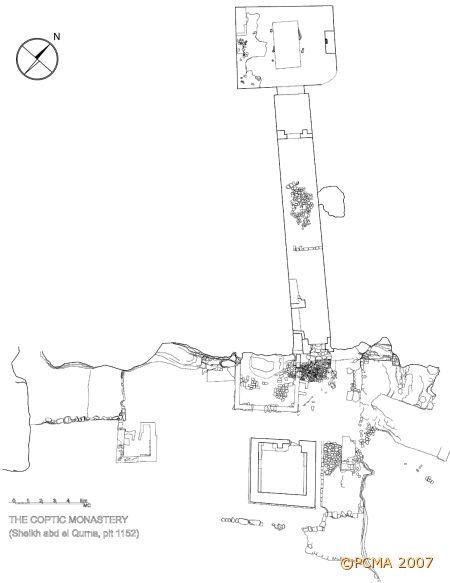
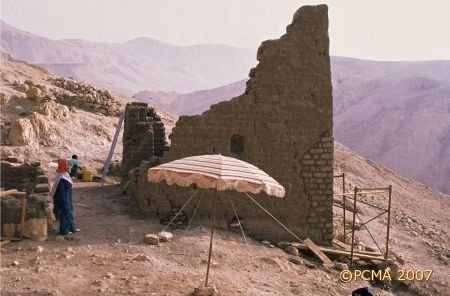
Work in the rubbish dump east of the keep, which Tomasz Górecki heading the mission carried out in the previous season, had brought the momentous discovery of completely preserved Coptic manuscripts (see below).
The natural boundary of the hermitage front yard was reached in the south, where a wall cut still in Pharaonic times was revealed. A round storage container of dried clay, 0.72m high and with a diameter of 0.87 m, was revealed near to this wall.
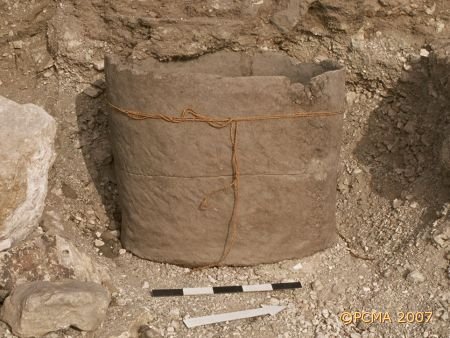
The rubble filling it concealed eight Egyptian amphorae of LRA 7 type. The rubbish dump continued to be cleared to the northeast of the tower, reaching a wall of loose blocks, which obviously delimited the extent of the hermitage courtyard to the north. Since this area was directly behind unit D uncovered in the previous season and interpreted as an open kitchen, it did not come as a surprise that large quantities of kitchen and table ware were excavated here. There also appeared a kind of mastaba bed set off with a row of bricks and apparently covered with a mat or loose reeds for sitting or sleeping comfort. Finds from the dump included the usual set of potsherds, organic remains, textiles and glass objects. One ostracon, likely a prayer or excerpt from the Bible, bears the name of the apostle Paul in fine, virtually book-like script.
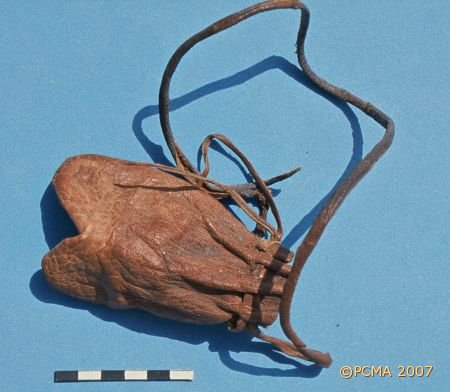
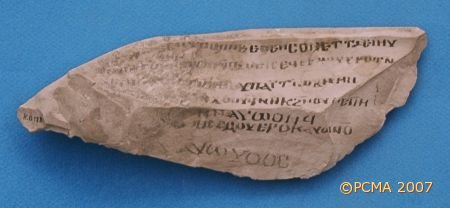
The keep was finally cleared this year, bringing to light a rich archaeological assemblage reflecting the chronological span and the general character of the Pharaonic and Coptic rubbish dump on which the tower had originally been erected. Upon completion of the excavations, the inside of the structure was backfilled with rock rubble to the level of the floor, which was reconstructed as a mud floor imitating the original surface.
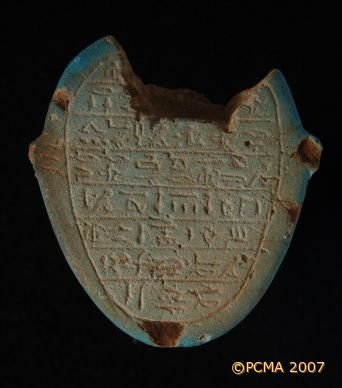
Inside the back chamber of the rock-cut part of the hermitage, the rock debris was cleared away, uncovering the discarded remains of two or three broken mummies, partly burned and mixed with animal bones, rubble and mummy wrappings. This is obvious evidence of plundering in search of valuables concealed between the layers of wrappings. No elements of typical grave equipment were found with the mummies, the sole exception being a faience heart-shaped amulet with an inscription quoting Chapter 30 of the Book of the Dead. The form of the amulet places it in the Late Period.
Testing inside the back chamber also revealed, among various objects of Pharaonic attribution, a Hieratic papyrus with the name of the fourth priest of Amon.
This season the team came well prepared to explore the shaft of the Ancient Egyptian tomb (recorded by Winlock as T.1152), including an experienced mountain climber to navigate the technical difficulties of working in an 18-m deep shaft. A corridor was found to run off to the west at the bottom of the shaft, but little could be seen beyond the rubble and stones collected in it. In any case, at this point it seems apparent that the shaft was filled in to the top when the Coptic monks were using the tomb for their purposes and the plundering did not occur until modern times. Indeed a thorough analysis of the stratigraphy of the fill in the tomb corridor has led the excavator to believe that the contents of the shaft had been dumped in the corridor as the robbers? work progressed.
With the full clearing of the rock-cut parts of the tomb wall painting restorer Cristobal Calaforra-Rzepka could set up store inside. One of the effects of his work is the now clearly visible equestrian figure of a saint brandishing a cross in one hand in a gesture of triumph or victory.
